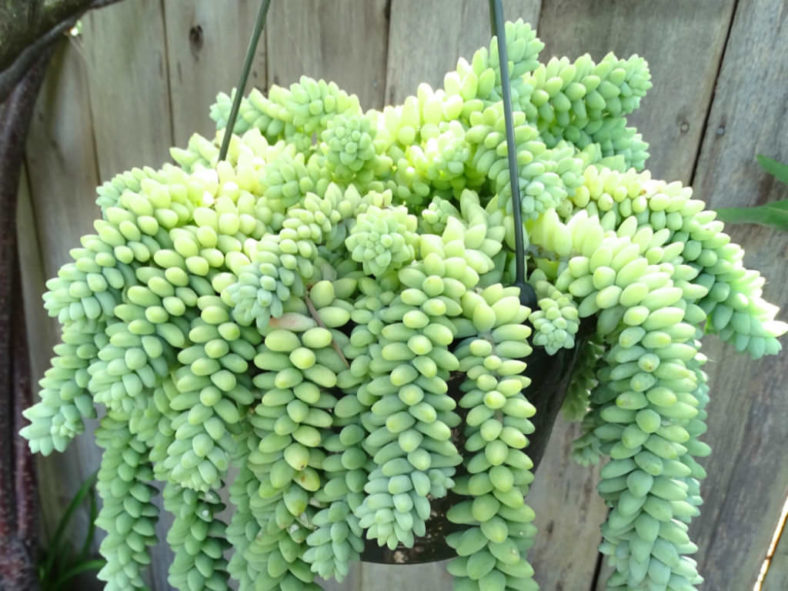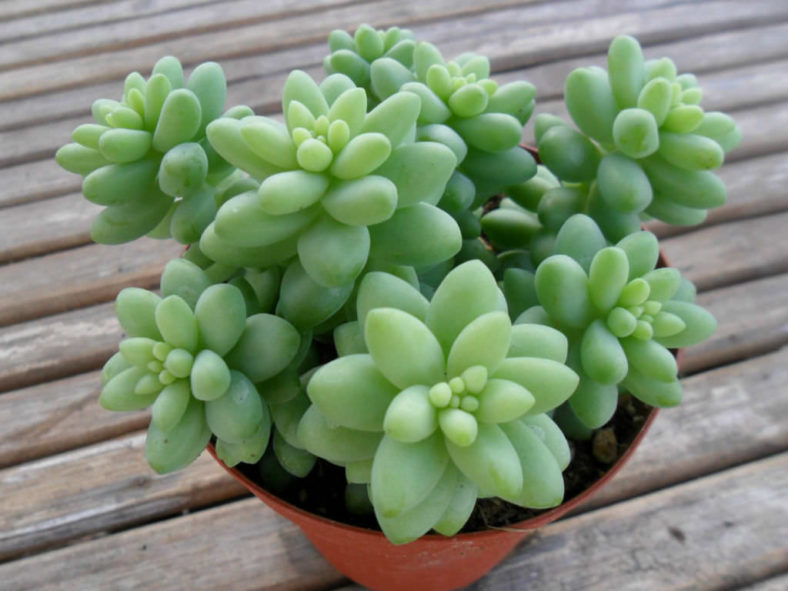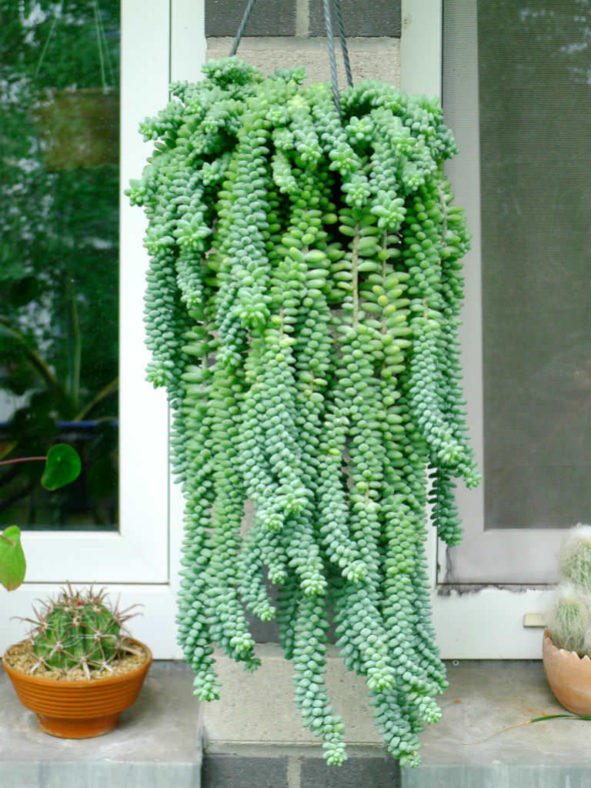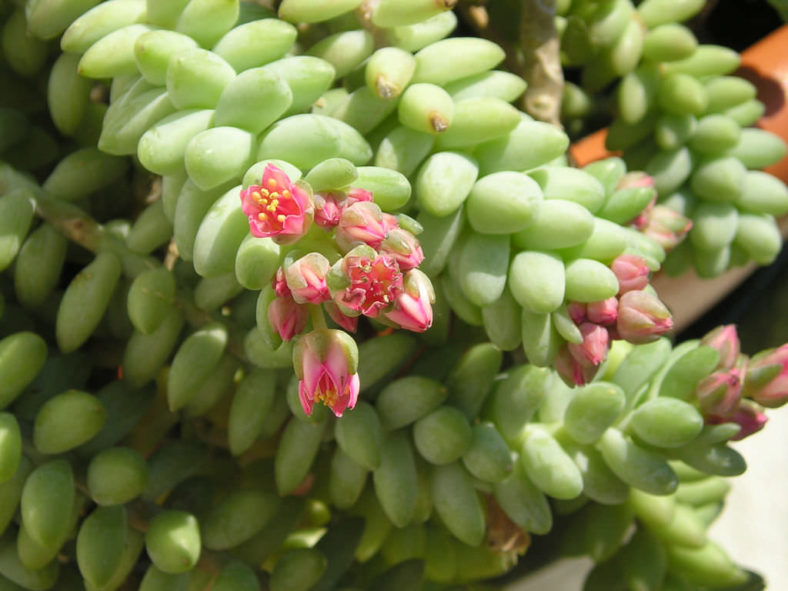Scientific Name
Sedum burrito Moran
Common Name(s)
Baby Burro's Tail, Baby Donkey's Tail
Synonym(s)
Sedum 'Burrito', Sedum morganianum 'Burrito'
Scientific Classification
Family: Crassulaceae
Subfamily: Sempervivoideae
Tribe: Sedeae
Genus: Sedum
Etymology
The specific epithet "burrito" (pronounced "bur-REE-toh") means "young donkey" and refers to the stems of this species, which resemble a young donkey's tail.
Origin
The origin of this popular succulent is quite a mystery. It was formally described in 1977 by Reid Moran based on two specimens bought several years earlier at local nurseries, one in Guadalajara and another in a small town in Veracruz, Mexico. So, there is no known record of Sedum burrito in the habitat. As it seems similar to Sedum morganianum, there has been conjecture that it is a vegetative sport or a natural hybrid of the latter. It was published by Myron Kimnach in 2017 as Sedum morganianum 'Buritto', but no material has been selected in cultivation.
Description
Sedum burrito, also known as Sedum morganianum 'Burrito', is an attractive succulent with trailing stems that bear grey-green to blue-green, densely packed leaves covered with a powdery bloom. It is similar to Sedum morganianum but has shorter stems and smaller, more rounded leaves. The stems can grow over 3 feet (90 cm) long, at first erect, becoming pendulous with age. The leaves are thick, fleshy, bean-shaped, measuring up to 0.6 inches (1.5 cm) in length and about 0.3 inches (0.7 cm) in diameter.
The flowers are small, star-shaped, and pink with deeper pink irregular lines and yellow anthers. They usually appear in spring in terminal clusters of up to 6.

Hybrids of Sedum burrito
How to Grow and Care for Sedum burrito
Light: These succulents grow best in full sun for at least 6 hours per day. Most species tolerate partial shade but do not thrive in deep shade.
Soil: Sedums do not tolerate waterlogged soil, so drainage is essential to prevent root rot. Choose a gritty, well-draining soil.
Hardiness: Sedum burrito can withstand temperatures from 30°F to 50°F (-1.1°C to 10°C) and is hardy in USDA Plant Hardiness Zones 10a to 11b.
Watering: Sedum plants are drought-tolerant but do need some water. They do best with regular watering from spring through fall. Water thoroughly, then wait for the soil to dry before watering again.
Fertilizing: Sedums generally require only a balanced organic fertilizer each spring. Feeding is unnecessary as long as the plants are divided annually and provided with fresh soil.
Repotting: Sedums in containers require a little more care than those in gardens. Repot your plants when they outgrow their current pot by moving them to a larger container to support the plant better.
Propagation: Once you have one Sedum, it is easy to make more by taking stems or leaf cuttings and dividing the plant. Sedums are also easy to grow from seed.
Learn more at How to Grow and Care for Sedum.
Toxicity of Sedum burrito
Sedums are not listed as toxic for people, but can be mildly toxic to pets and children.
Links
- Back to genus Sedum
- Succupedia: Browse succulents by Scientific Name, Common Name, Genus, Family, USDA Hardiness Zone, Origin, or cacti by Genus
Photo Gallery
Click on a photo to see a larger version.


